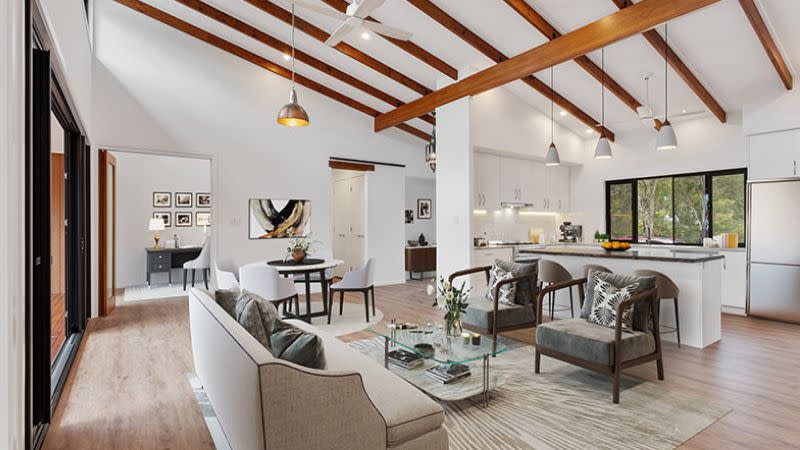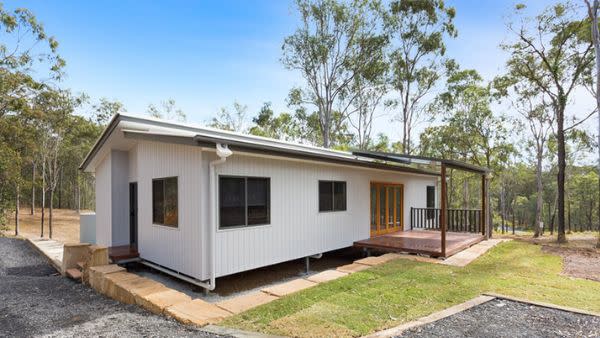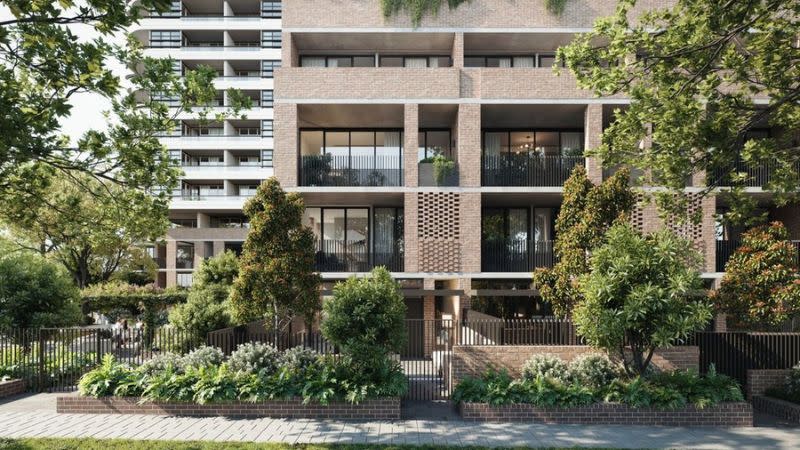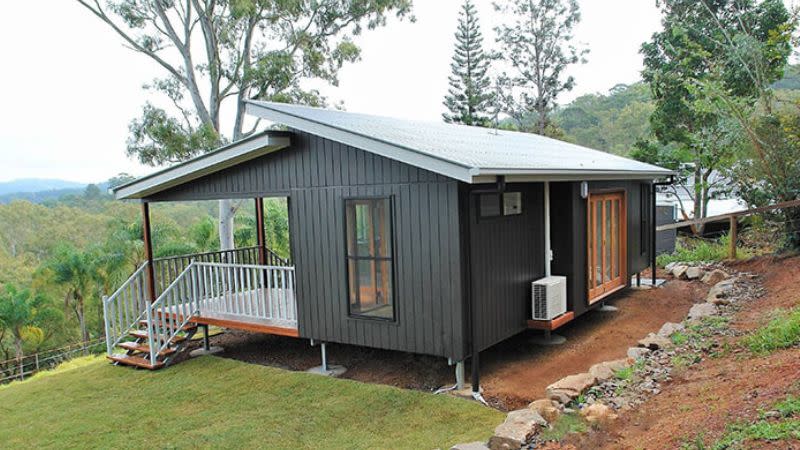
Intergenerational living is gaining in popularity as the cost of living bites and developers are slowly but surely catching on to the demands of these new household configurations.
Until recently, multi-generational households were uncommon, according to the Australian Institute of Family Studies.
But reported data from the Australian Bureau of Statistics found that households containing three generations increased by 275,000 in 2016 to 335,000 in 2021, and this only looks set to increase following years of pandemic-related turmoil and inflation.
Colliers director of residential Jon Rivera says that there has been a noticeable move towards inter-generational living, prompting developers to consider their response.
“This trend can be attributed to several factors, including the rising cost of living. [Rising] housing, childcare, and healthcare expenses have made it financially challenging for families,” he says.
“Sharing a larger home with multiple generations allows for pooling of resources and reducing individual expenses.”

Operations manager at granny flat builder Hoek Modular Homes Shane Windsor says that the Queensland-based company has been in the market for more than two decades and has seen trends come and go.
“Recently though, there has been dramatic changes in the interest and ability to invest in granny flats and secondary homes,” Windsor says.
The Queensland government last year made changes to allow owners to rent out secondary homes, which has been permissible in Victoria and NSW for many years.
“This means we now have investors in the market who would not otherwise be there,” Windsor says.
“The most common has traditionally been your Mr and Mrs Smith looking to add a granny flat to their existing property for possibly elderly relatives or younger adult children.
“But now I’m dealing with more and more developers looking at these things as options, especially if land might not be subdivisible.
“We’ve had developers landbanking but, wanting to make a maximum income with the land in the meantime while waiting for the construction industry to settle, they look to granny flats and modular homes to do it.”
Compared to new-home build times, a modular home can take six to eight months from planning to construction, depending on site specific challenges and planning, Windsor says.
Challenges in site topography and utilities infrastructure can also send the price up.
Developers and homebuilders have responded to the early-stage trend with secondary homes—granny flats and modular homes on an existing site—as well as changes to the size and typology of new detached homes and even units.
Rivera says the Colliers team has noted some important changes in new build homes as developers catch on.
“Inter-generational living has influenced the typology, style and floor plans of new homes, largely by swapping out multi-purpose spaces to accommodate for a second master or fifth bedroom,” he says.
“Generally, they are located on the ground-floor for accessibility.
“Home builders and developers are including features such as additional bathrooms and storage over increased floorspace.
“Builders have recognised the growing market and are offering more flexibility in designs to accommodate this trend.”

But there are other ways developers and designers are adapting to inter-generational living, according to senior research fellow at the University of NSW City Futures Research Centre Dr Edgar Liu.
“Secondary homes [are] a solution but that is limited in terms of the household having the land and financial means to do so, assuming they owned in the first place, [so it is] definitely not an option for renters,” he says.
“There are developers starting to target this cohort, with smaller boutique builders that specialise in custom builds, and larger developers that have attached or detached annex included in some of the plans that they sell.”
But many new developers are still not taking this movement into account.
“Most products I have seen are concentrated in the detached housing market and multi-generational families are almost completely ignored within higher-density developments, with most apartments being relatively small that are then not suitable to most families,” Dr Liu says.
“Of the very few that include larger apartments, and fewer still that include things like dual-key apartments, especially an apartment with its own attached granny flat, these tend to be at the higher end of the market or price point.

“The latter is also more likely to be marketed as an investment option, so you live in one and rent out the other, rather than promoted for multi-generational living.
“This has created a situation where multi-generational families are more likely to be concentrated in the outer suburbs where larger properties are more affordable.
“The downside is most developers assume young families would settle into greenfield developments and gear local services and amenities towards that cohort.
“For multi-generational families who settle into these areas, especially ones with older family members, service accessibility becomes a real issue.”
Shorter planning and build times make secondary homes an attractive option, as well as the potential for additional income when family members move out.
According to Ray White, the average costs of granny flats can range from between $100,000 to $150,000 and could add 20 to 30 per cent to the total value of the home.
Inter-generational living is also a response to moves towards ageing-in-place for a growing elderly population, which is expected to grow from 16.2 per cent in 2021 to 20.7 per cent in 2066.
“As the population ages, the need for caregiving and support for elderly parents or grandparents has increased,” Rivera says.
“Multi-generational living offers the opportunity for closer supervision, care, and companionship, which can be beneficial for older family members.”

Dr Liu says that, historically, intergenerational living was certainly less common in Australia but trends in the senior population are also prompting the move.
“The fastest-growing age group for multi-generational households members since the mid-1980s are those aged 65-plus.
“Many of our participants in these situations mentioned the cost of aged care, and/or the lack of quality and value for money in aged care, has driven them to consider this as a ‘better’ arrangement.
“This is also in response to governments’ push for ageing in place, to encourage older people to remain living within the general community for longer rather than going into care homes or retirement type accommodation.”
There are implications to this in terms of accessible design but also complexities of asset ownership, which only increases when you add younger generations into the mix, he says.
Shane Windsor says these trends were coming to life on sites.
“The phrase ‘granny flat’ exists for a reason, it’s traditionally the older parents who move in—that’s always been there and is not a new thing,” he says.
“However, what we are finding is that there is now a much younger demographic. It is about families coming back together a little bit more traditionally.
“But there are all sorts of different dynamics, adult children who have intellectual challenges for example. They want their independence and the first step is to be within the grounds of the family home.”

Windsor points out that there is still a long way to go with the acceptance and understanding of secondary homes and realestate.com.au does not even list granny flats as a menu option.
“But there will be a tipping point. We already can’t keep up with enquiries but I have doubled and will probably triple the volume and dollars per year since the start of Covid,” he says.
Colliers’ Rivera agrees and says it is still in its early stages and that awareness and investment in the trend among developers varies.
“Builders, who directly engage with homebuyers, often possess a deeper understanding of their specific needs and preferences,” he says.
“But developers and builders who anticipate the trajectory of this growing trend amid population growth and housing supply tension, will reap the rewards of investing in enhanced housing outcomes long-term.”
You are currently experiencing The Urban Developer Plus (TUD+), our premium membership for property professionals. Click here to learn more.





